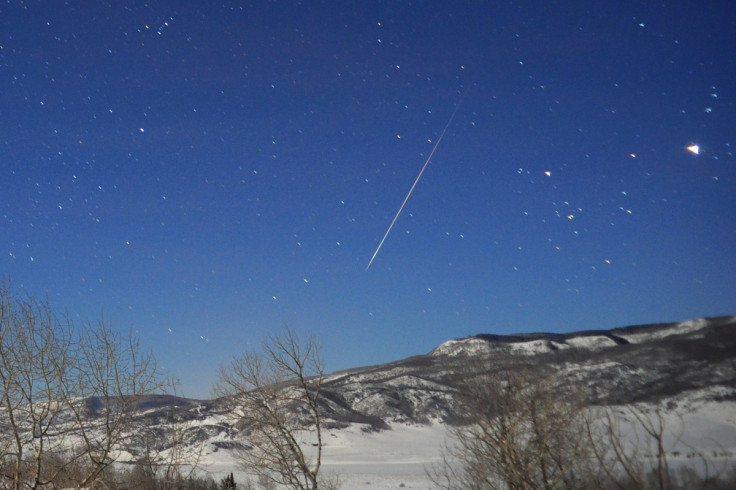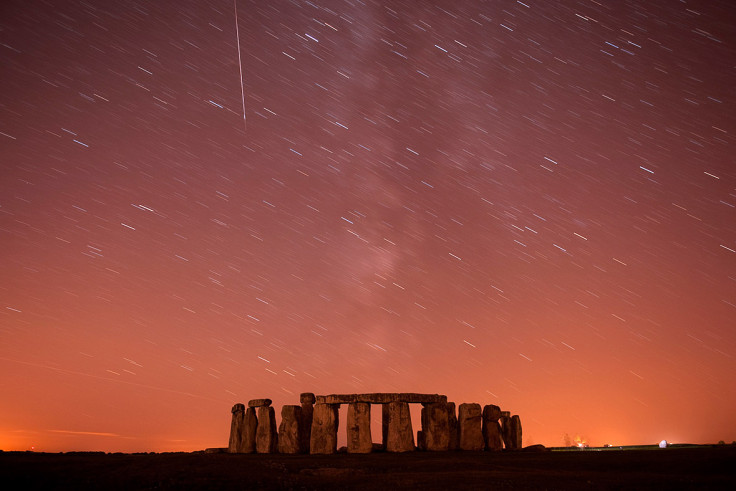How to spot a spectacular shooting star during the Delta Aquarid and Perseid meteor showers
Shooting stars from Delta Aquarid meteor shower will light up night sky from end of July to mid-August.

The annual Delta Aquarid meteor shower is set to peak at the end of July in a spectacular display of shooting stars across the night sky. Due to peak at around 28 and 29 July, the Delta Aquarids are active until mid-August, which means they would coincide with the brighter Perseid meteor shower.
Where does the meteor shower originate?
The shower is believed to originate from the comet 96P/Machholz, although this is disputed by some astronomers. This short-period comet, discovered in 1986 by Donald Machholz, orbits the sun about once every five years.
The meteor shower gets its name because their radiant appears to lie in the constellation Aquarius, near one of the constellation's brightest stars, Delta Aquarii.
During the peak of the shower at the end of July, the hourly rate of meteors can reach 15-20 meteors in a dark sky without light pollution.
What is a meteor?
Meteors come from leftover comet particles from broken asteroids.
When comets pass around the sun, the dust they emit turns into a trail around their orbits. The Earth passes through these debris trails and the particles collide with our atmosphere where they disintegrate and burn up, creating flashes of light across the sky.
As Nasa explains: "A meteor is a space rock, or meteoroid, that enters Earth's atmosphere. As the space rock falls toward Earth, the resistance, or drag, of the air on the rock makes it extremely hot. What we see is a 'shooting star'. That bright streak is not actually the rock, but rather the glowing hot air as the hot rock zips through the atmosphere. When Earth encounters many meteoroids at once, we call it a meteor shower."

The Perseid meteor shower, associated with the comet Swift-Tuttle, is also active from mid-July but does not peak until 12 to 13 August.
What is the best way to spot the meteor shower?
For the best chance of seeing the meteor shower, find an area with little light pollution where you can set up camp with a sleeping bag, blanket or chair – as you might be in for the long haul. Nasa advises to lie flat on your back so you have a panoramic view of the night sky. It will take around half an hour for your eyes to adapt to the dark, which will help you see the shower.
For astronomy fans wanting to see the meteor shower in the comfort of their own home, the Slooh Observatory will be hosting a live stream.
Where is the best place to see a meteor in Britain?
London: The WaterWorks Nature Reserve in east London is a spot less affected by light pollution – a rarity in the capital. You can get there via Clapton and Leyton Midland Rd stations.
Birmingham: Warley Woods is west of the city centre and can be reached via the A456 Hagley Road.
Manchester: Heaton Park is the largest park in greater Manchester. It is accessible by tram or bus from the city centre, or via the M60 motorway.
Glasgow: The Mugdock Country Park can be reached by bus from the city centre.
Cardiff: The Brecon Beacons Dark Sky Reserve was the first destination in Wales to be granted special protection as an international dark sky reserve.
Belfast: Oxford Island National Nature Reserve hosted an event for the BBC Stargazing Live in 2012 and 2013.
Where is the best place to see a meteor in the United States?
Pennsylvania: Cherry Springs State Park is a gold-certified International Dark Sky Park and its night sky viewing area is open 24/7.
California: Death Valley National Park is a gold-certified International Dark Sky Park, with very little artificial light within its 3.4 million acres. Angeles National Forest in Los Angeles County, southern California, is also good spot.
Philadelphia: The Tuckahoe State Park is two hours out of the city.
Arizona: The Kitt Peak National Observatory, near Tucson, is home to the world's largest collection of optical telescopes. The clear, dark skies of the Sonoran desert are also a firm favourite with astronomers.
Utah: The night sky at Bryce canyon is so dark it is possible to see 7,500 stars on a moonless night.
Illinois: The Hickory Knolls Discovery Centre in St Charles is a nature conservatory and a Dark Sky Park.
New Mexico: Chaco Culture National Historical Park is a great location to try and spot the Delta Aquarids.
Texas: The Big Bend National Park in west Texas has gone to some lengths to retain its International Dark Sky status, including by changing the lighting to shielded LEDs.
© Copyright IBTimes 2025. All rights reserved.





















